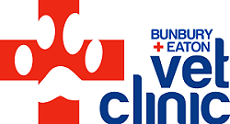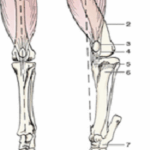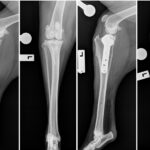Short-Faced Dogs and their Breathing Issues
I think that almost all of us agree that these short-faced dog breeds are incredibly cute and have the best personalities. Pugs, French Bulldogs, and other brachycephalic (short-faced) breeds are very popular for a reason. But did you know that the very characteristics which make them so cute are the same thinks which can make their life one of frequent trips to the vets.
A common set of problems we see with these dogs is called Brachycephalic Obstructive Airway Syndrome (BOAS). This syndrome is a combination of multiple conditions, including:
- Stenotic nares (narrowing of the nostrils)
- Long soft-palate
- Secondary changes such as laryngeal (voice box) collapse
- Tracheal hypoplasia (an excessively narrow wind-pipe)
So, how does BOAS make it difficult for a dog to breathe?
Stenotic Nares:
The way I explain narrow nostrils is to imagine breathing through a straw. The narrowing makes it much harder to suck in enough air to breathe normally. Because the nostrils are actually quite soft, the increased effort to breathe in means the nostrils are sucked in, making it even harder to breathe.
Long Soft-Palate:
A long soft palate causes problems by partially blocking the larynx (voice box). When the dog breathes in, the soft palate is sucked in to the opening of the larynx, causing a partial obstruction. When dogs are breathing fast, especially after exercise and when very hot, the suction effect is much greater, and it can make it very hard for them to catch their breath or pant effectively.
Secondary Changes:
The increased breathing effort combined with the air turbulence caused by the above changes can cause structures in the airway such as the larynx, tonsils or pharynx to thicken. This thickening causes further narrowing of the airway, which makes the problem worse and creates a vicious cycle of harder breathing and worsening obstruction.
Tracheal Hypoplasia:
A narrow windpipe once again has the same effect as breathing through a straw. This is most commonly seen in English Bulldogs, and is very hard to manage.
Effective Cooling:
The most common time we see short-faced dogs experiencing severe problems is during summer. Because dogs cool by panting, they need to be able to breathe well to pant efficiently.
With short-faced dogs, the cooling effect of breathing isn’t as efficient as the mouth and nose are shorter, which means the air flowing over these surfaces doesn’t have as much of a cooling effect.
Because the cooling is less efficient, they have to pant more, which means the effort of breathing is greater. This can cause the airway to collapse, and the effort of panting can create more heat than it helps lose (the muscles contracting to cause panting creates body heat).
We often see these dogs in severe respiratory distress requiring an emergency anaesthetic to clear their airway and allow us to cool their body. If the body temperature is too high when we get the dog, or if the airway obstruction is too severe, the dog can die.
How Do We Treat BOAS?
Because BOAS is often a combination of problems, we need to assess each dog as an individual to see what help is needed.
For dogs which manage well and might just snore a lot (the long soft palate is what causes the snoring), we may just monitor their breathing and intervene if problems develop.
For dogs which are showing signs of breathing issues, it is very important to consider surgery early. By correcting problems such as the stenotic nares and long soft palate, we can prevent the secondary changes from occurring. This in turn makes any surgery easier, less risky, and generally gives better outcomes.
The Surgery:
To correct the stenotic nares, we normally perform a wedge resection. We remove a wedge of tissue from the nose, which allows us to open the nostrils. Dissolvable sutures are normally used so there is no need to remove the sutures.
Correcting a long soft palate is much more complicated. This surgery involves trimming and suturing the back of the soft palate so it no longer blocks the airway. It is important not to remove too much of the soft palate, as this can create problems such as food entering the nasal passages.
If we find secondary issues during the surgery we may correct those as well. This is where early intervention is important as we can avoid many of these problems if we correct the nose and soft palate early.
What Does Surgery Cost?
As you can imagine, people who have just spent several thousand dollars on a pedigree dog (some French Bulldogs cost up to $10000) are often upset that they then need to pay more to correct the dogs breathing issues. Unfortunately paying a lot for a dog doesn’t guarantee good health, and when certain breeds of dog are very expensive it often means dogs are bred irresponsibly to make a quick profit.
Depending on the type of surgery needed, the cost can vary between $650 and $1250. Once your pet has been assessed by a vet you can be given a more accurate estimate.
As a comparison, when we see dogs collapsed due to overheating or breathing issues, the cost can be as high as $3000, with no guarantees of the dog surviving.
If you have a short-faced dog which experiences any breathing problems, please see your vet as soon as possible. With the hot summer months nearly here, it is important to ensure their breathing and cooling is as effective and efficient as possible.



Hello how Old does dog does my frug need to be for nares surgery and possibly soft palate
He’s snorting and you can hear the air pass his nostrils on the way in